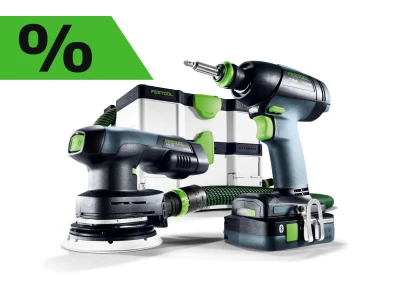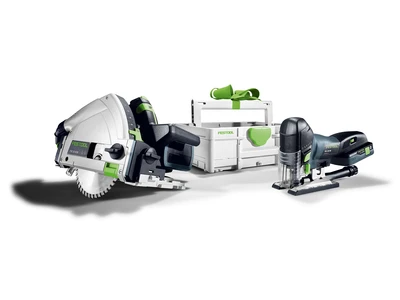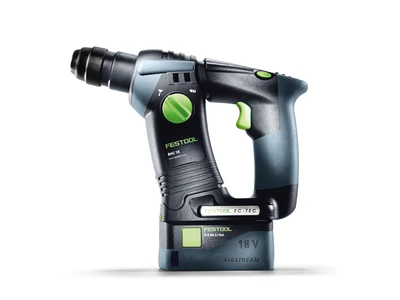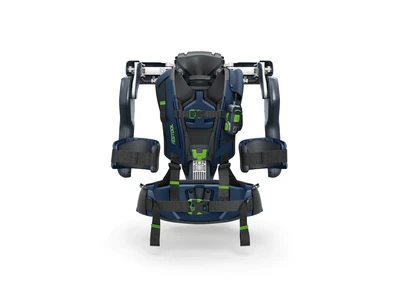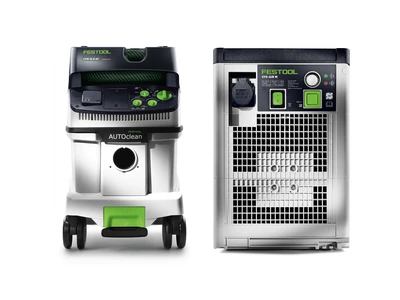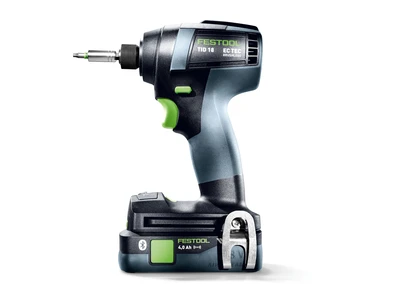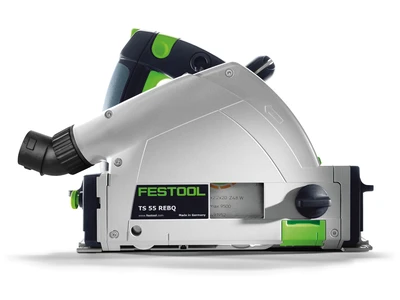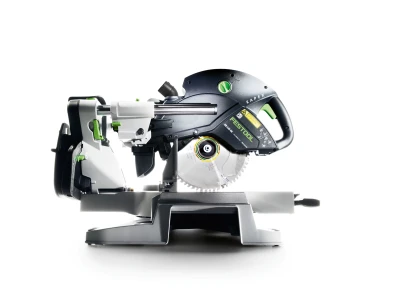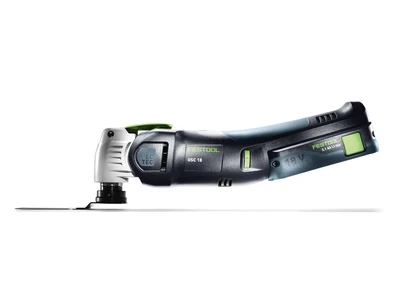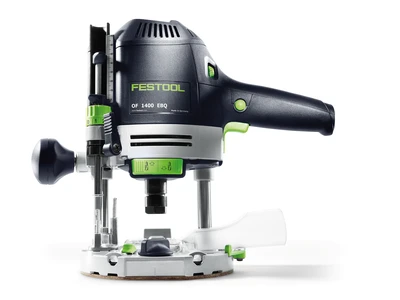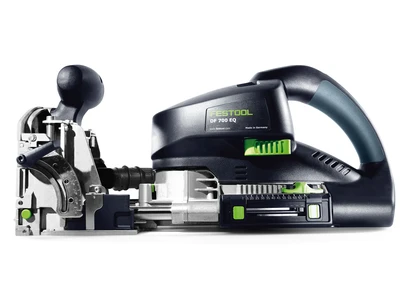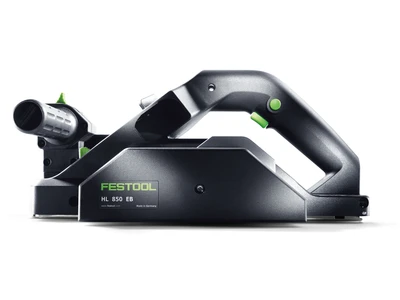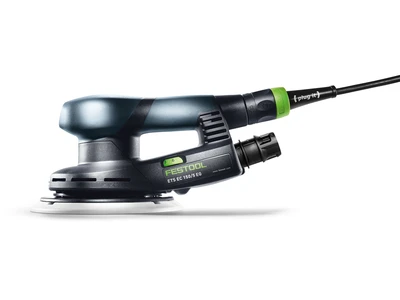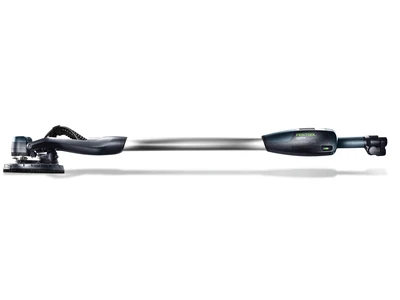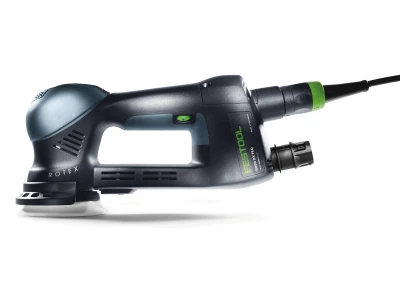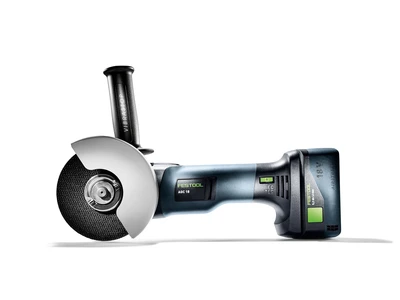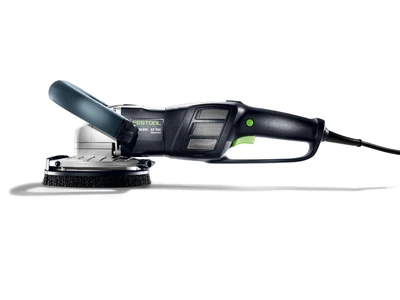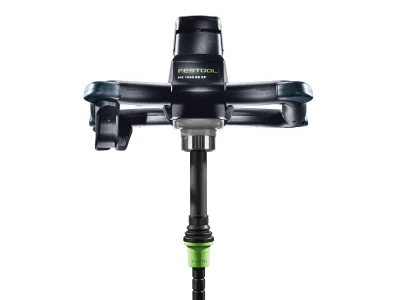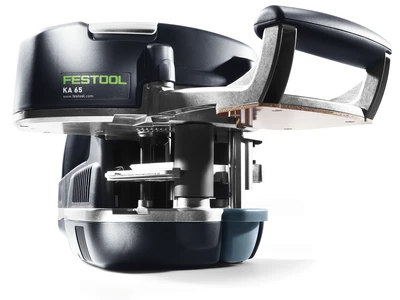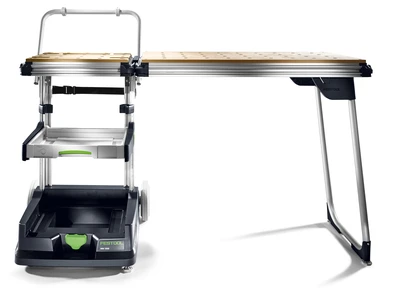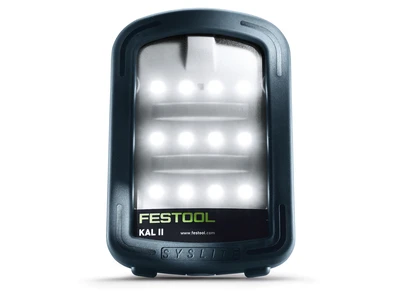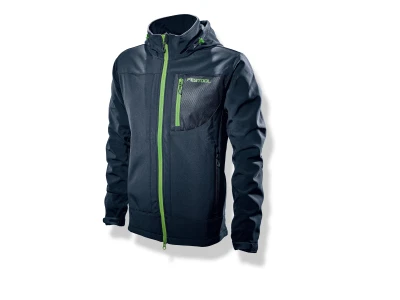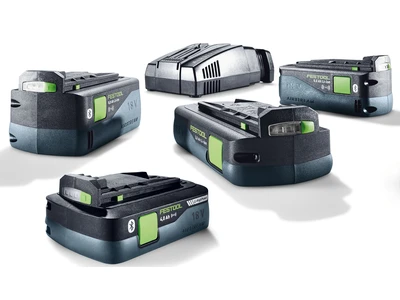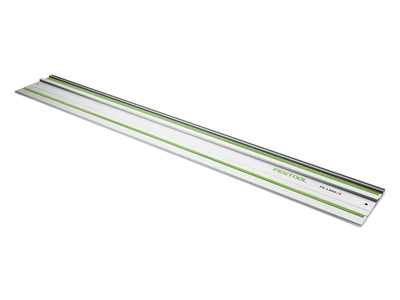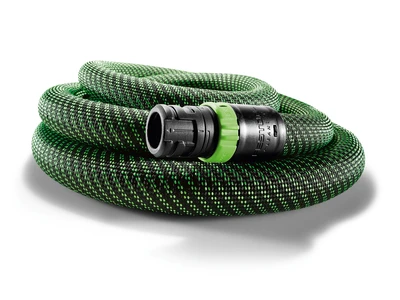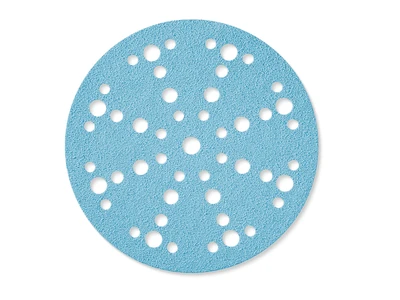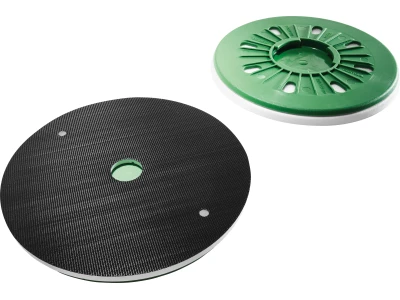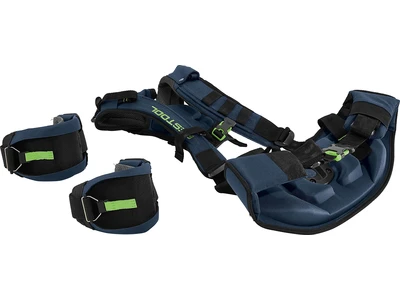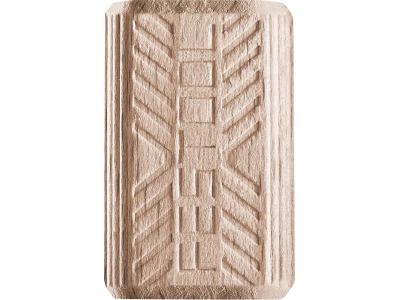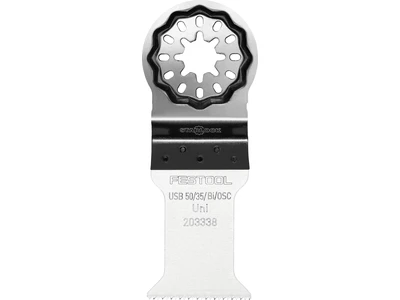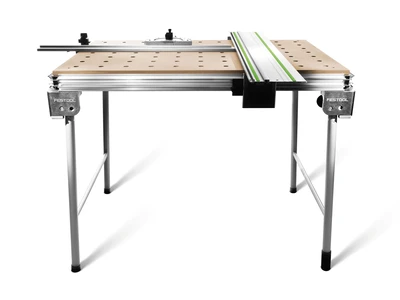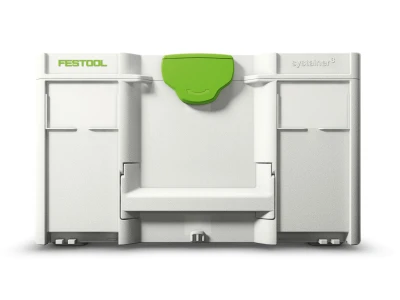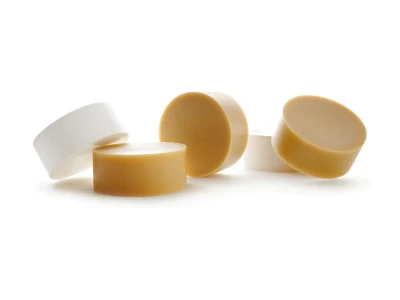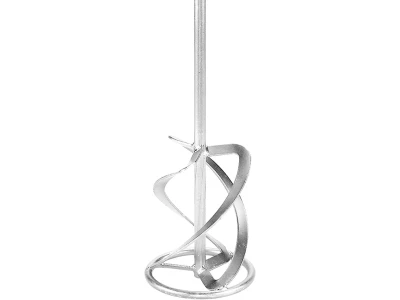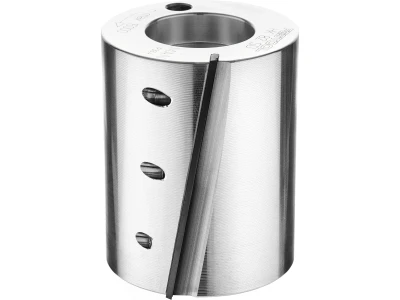FAQs
Which Festool saws currently feature the SawStop AIM technology?
At the moment, the SawStop AIM technology is installed in the TKS 80 EBS table saw.
How can I be certain that the SawStop AIM system is activated and working?
The saw will only start if all self-tests (saw blade/cartridge inserted correctly, etc.) have been performed and the SawStop AIM technology is activated, although it can be switched off manually for conductive materials.
Can I machine conductive materials with the TKS 80?
Yes, but the SawStop AIM technology must be switched off to do so. It's then possible to saw aluminium, wet wood, etc.
Can I test a material for conductivity?
Yes: With the machine in standby mode, hold the material against the saw blade – if the red LED flashes, the technology will be triggered.
What will break or need to be replaced if the SawStop AIM technology is triggered?
The cartridge and the saw blade must be replaced. The saw itself will not be broken and will not need to be sent to the customer service team. Users can replace the saw blade and cartridge themselves.
Does the TKS 80 require an earthed power source?
The SawStop AIM technology only works if a protective earth connection is present and the power source is earthed. For more details, please refer to the operating instructions for the TKS 80 EBS.
Is it possible to retrofit the SawStop AIM technology on other Festool circular saws?
It is currently not possible to retrofit the SawStop AIM technology. This technology only works in the product combination/system for the TKS 80 table saws.
What is a KickbackStop?
A KickbackStop, also referred to as kickback control, is an accessory fitted to tools to protect users against sudden kickbacks. The installed KickbackStop function helps to detect if the tool abruptly kicks back or lifts. The motor is then stopped by emergency braking in order to avoid dangerous kickbacks. However, the way the KickbackStop works varies from tool to tool.
How is the KickbackStop technology in plunge-cut saws and screwdrivers different?
During sawing with the TSC 55 K and TS 60 K, the KickbackStop's feeler wedge rests on the guide rail or on the material that is to be processed. If a kickback occurs when plunging into the workpiece or when sawing, this wedge immediately detects this and triggers emergency braking almost simultaneously. This stops the plunge-cut saw from moving backwards unpredictably and therefore minimises the risk of injury. When drilling and screwdriving with the QUADRIVE, a sensor in the electronics continuously monitors the speed in the rotary movement and the twist angle. If the tool becomes jammed, the machine will immediately detect the critical state and switch off without delay.
Can the KickbackStop be deactivated (bypass option)?
It is different for the plunge-cut saw and the (percussion) drill.
In the case of the TSC 55 K or TS 60 K, the KickbackStop function can be deactivated. This is mainly used when working without a guide rail for sawing uneven workpieces. Since machining an uneven workpiece with the KickbackStop activated would cause the function to be triggered incorrectly, it is recommended that you deactivate the KickbackStop function. The KickbackStop is automatically reactivated the next time the plunge-cut saw is switched back on – for maximum user protection.
In the case of the TPC 18/4 and the TDC 18/4, the KickbackStop function cannot be deactivated for safety reasons.
Why is dust hazardous?
Tradespeople or people who work at construction sites often produce a high volume of dust while working.
Some of this dust contains extremely hazardous substances, meaning that incorrect extraction can lead to small quantities being inhaled and this may cause illnesses.
For example, irritation and other diseases may be caused when working in dusty conditions:
• Asthma
• Bronchitis
• Lung cancer
• Bronchial cancer
• Mouth and throat cancer
• Skin cancer
• Nasal mucous membrane cancer
In particular, fine dust is too small to be filtered through the nasal hairs or mucous membranes and can therefore quickly enter the lungs, potentially causing severe damage. Silica and asbestos dust are particularly dangerous and considered to be carcinogenic.
However, in the long term, wood dust may also lead to nasal cancer.
You should therefore take extreme care to avoid inhaling high volumes of dust over a short period of time and use the appropriate precautionary measures for dust-free work.
What are the different dust classes?
Dust that is produced while working is divided into three classes.
This process specifies the extractor's suitability for any given dust class and the maximum allowable concentrations (MAC).
The dust classes also define the filter system's required degree of filtration for dust-free work. The different classes are as follows:
• Dust class L
• Dust class M
• Dust class H
Dust in dust class L is considered to be "slightly" hazardous.
Dust class L therefore includes simple and harmless dust, e.g. household dust, soil, lime, paint and varnish.
Moreover, a maximum extraction permeability of 1% applies to all dust in this class with a maximum occupational exposure limit of more than 1 mg/m³. This is because the lower the occupational exposure limit value, the more harmful the dust.
It is also vital to choose the dust class of your mobile dust extractor according to the material you use.
Dust in class M is referred to as "moderately" hazardous and includes wood, concrete, cement, screed, copper and borax.
This class is used for dust with an occupational exposure limit value of more than 0.1 mg/m³.
The permeability of the extractor should be 0.1% in order to enable dust-free work.
Meanwhile, dust class H comprises "highly" hazardous dust, such as germs, bacteria, asbestos, viruses, mould, cadmium, formaldehyde, potassium dichromate and carcinogens.
This class applies to all dust with a maximum occupational exposure value lower than or equal to 0.1 mg/m³ and a maximum extraction permeability of 0.005%.
Which limit values apply to air at the workplace?
Dust-free work should be facilitated for all workers at the workplace, in accordance with the Hazardous Substances Ordinance (GefStoffV).
The maximum occupational exposure limit (OEL) is a suitable guideline for this purpose.
The lower the value, the more harmful the dust is at the workplace.
Machines from dust class L are suitable for dust with occupational exposure limit values > 1 mg/m³.
The suction device should have a maximum permeability of 1% and it should be possible to dispose of the associated filter bag with minimal dust.
Dusts with occupational exposure limit values > 0.1 mg/m³ are listed in dust class M.
Accordingly, your extractor should have a permeability of 0.1% and it should be possible to dispose of it with minimal dust.
Meanwhile, dust class H refers to highly hazardous dust with occupational exposure limit values < 0.1 mg/m³.
Only dust extractors with a maximum permeability of 0.005% and completely dust-free disposal are suitable.
When carrying out tasks involving asbestos or harmful substances, you need to use dust extractors from dust class H, which also have a label for asbestos.
The maximum permeability and disposal of these machines correspond to class H.
The "Zone 22" class includes explosive dust. The maximum permeability and disposal correspond to dust classes L and M.
Legal requirements stipulate that M and H extractors must also warn users as soon as the air speed in the hose is 20 m/s or slower.
How are vacuum cleaners and dust separators different?
Industrial vacuum cleaners are only used to extract deposited dust.
On the other hand, dust separators for portable operation are also used to extract dust emissions from hand, power and machining tools.
They are connected to the machining tool by a suction hose and often have a socket to connect to the power tool.
There is also a significant difference in the warning device, which delivers a visual or audible warning if the flow volume falls below a set value.
This signal is intended to indicate to users that the tool's dust emissions are not being collected sufficiently and that the dust exposure is too high.
Industrial vacuum cleaners do not typically have such a warning device, only a pressure gauge or an LED light. This means that dust separators can also be used as industrial vacuum cleaners without any problems.
Why should I buy a Festool extractor?
Dust-free work is Festool's top priority.
This is demonstrated by the fact that Festool is the only power tool manufacturer to produce its own mobile dust extractors and is therefore able to uphold its system concept.
This is because the best suction power for dust-free work can only be achieved if the tool, hose and mobile dust extractor are perfectly coordinated.
All of the machines are subjected to tough test conditions and must meet the highest expectations.
This means that Festool itself specifies what the best ergonomics are, how the maximum suction power is achieved and what useful accessories are required.
The suction devices are continuously developed to provide tradespeople with a quick, simple, clean and safe support for dust-free work.
In addition, the machines offer many additional advantages, such as:
• Three-year full warranty, including wear parts
• Very strong suction power
• Integrated Bluetooth® technology
• Connection for Systainers (T-LOC)
• Touch control panel
• Antistatic and smooth suction hose
• Stable design suitable for conditions on construction sites, with steel axle
• Large wheels and reinforced body
• Easy to carry thanks to perfect ergonomics
• Full-capacity container volume
• Adjustable extraction volume
• Cable holder
• Perfectly seated connections to Festool machines (Bayonet fitting)
• Different modules can be retrofitted
• Hose holder and safe storage area for tools
• Automatic main filter cleaning


